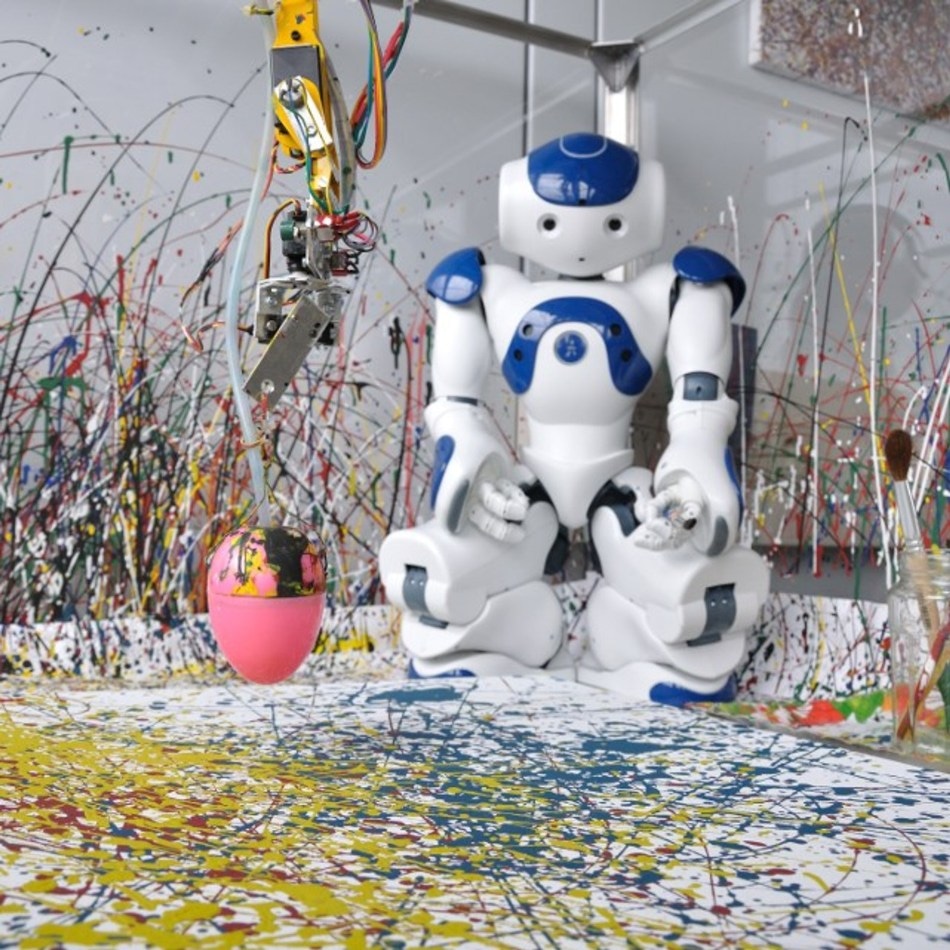Apr 24 2017
It was just announced that Google has developed AI that can sketch images. It should, therefore, come as no surprise that dozens of robots from around the world are now also painting with a brush, and many of them are quite skilled.
 Jacksonbot - Abstract Painting Robot (Credit: PRNewswire)
Jacksonbot - Abstract Painting Robot (Credit: PRNewswire)
The Robot Art 2017 competition returns for a second year with over 39 painting robots, more than twice the participants it had in its inaugural year. In addition to more robots, there is more artwork. More than 200 paintings have been submitted. With regards to the quality of the artwork, the event's sponsor and organizer, Andrew Conru, sums it up best:
"The quality of the paintings for many of the teams has reached levels that are comparable with human artists. Many of this year's entries are expressive, layered, and complex."
The creativity of the teams and robots was evident not only in the artwork they produced, but also in how they went about making the art. Of the 39 painting robots, no two teams took the exact same approach. The Manibus Team captured the movements of a ballerina and painted it to canvas. HEARTalion built a robot that paints based on emotional interactions with humans. share your inner unicorn used brainwaves to control a mark-making mobile robot. Other teams built custom robots that capitalized on their innate lack of precision to make abstract work such as Anguis, a soft snake robot that slithers around its canvas. Other robots were built to collaborate with their artistic creators such as Sander Idzerda's and Christian H. Seidler's entries.
Two returning entries that were notable for their skilled approach to representational paintings in last year's contest have gone abstract. e-David submitted multiple abstract self-portraits not of a human, but of the robot itself. Each of its works was a collaboration between an artist and the machine, where most of the decisions were actually made by e-David as it continually watched and optimized its own progress on the canvas with multiple external cameras. CloudPainter also submitted multiple abstract portraits. Its subjects were taken from photo shoots performed by the robot itself. For several of CloudPainter's paintings, the only artistic decision made by an artist was to schedule the photo shoot. The robot then used artificial intelligence and deep learning to make all other "artistic" decisions, including taking the photos, making an original abstract composition from its favorite, and then executing each brushstroke until it had calculated it had done the best it could to render its original abstract composition.